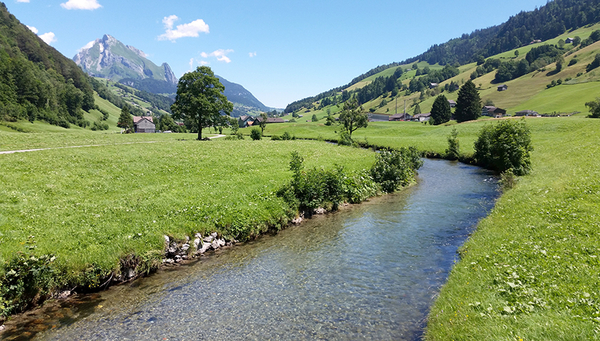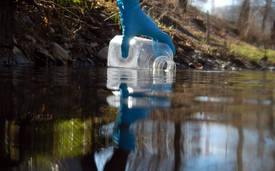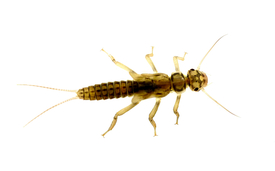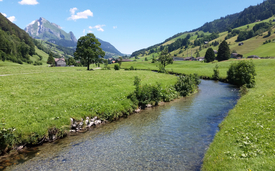News Detail
Predicting the Biodiversity of Rivers
July 17, 2020 |
Biodiversity is severely threatened both in Switzerland and worldwide, and numerous organisms are facing massive declines – particularly in freshwater ecosystems. All the species living in rivers – including fish, bacteria and many different aquatic invertebrates, such as may-, stone- or caddisflies – are crucial for the functioning of these ecosystems. But many species are highly threatened due to habitat homogenization, pollution by pesticides and nutrients, or the spread of non-native species. In order to understand and protect riverine ecosystems, assessing their biodiversity is essential.
Taking a water sample for subsequent analysis of the environmental DNA
(Photo: Eawag, Elvira Mächler)
Combining environmental DNA and hydrological models
In a new study, the research group of Florian Altermatt, professor at the Department of Evolutionary Biology and Environmental Studies of the University of Zurich (UZH) and the Swiss Federal Institute of Aquatic Science and Technology (Eawag), developed a novel approach to predict biodiversity patterns in river ecosystems. «For the first time, we combined the use of environmental DNA with hydrological models, in order to make predictions on the state of biodiversity at a very fine resolution across catchments of hundreds of square kilometers», says Altermatt.
Biodiversity predictions with high accuracy
All organisms constantly shed their DNA into the environment. By collecting water samples, extracting and sequencing this so-called environmental DNA (eDNA), the biodiversity can be determined faster, less invasively and more comprehensively than by identifying the organisms themselves. Since the DNA in rivers can be transported downstream by stream flow for many kilometers, information on the occurrence of organisms in the upstream catchment is also received. Using mathematical models based on hydrological principles, the scientists were able to reconstruct biodiversity patterns for the whole 740 square kilometers basin of the Thur in North-Eastern Switzerland with a resolution of 1 kilometer long stream sections. «Our model is matching the direct observation of aquatic insects’ local occurrence with an unprecedented accuracy of 57 to 100 %», says Luca Carraro, first author of the study.
Stoneflies of the genus Isoperla (Isoperla grammatica in the picture) and many other aquatic insect species were recorded in the study using environmental DNA
(Photo: Eawag, Florian Altermatt)
Identifying unseen biodiversity hotspots
The Thur catchment is representative for many land-use types, including forest, agriculture and settlements. It thus serves as a generalizable example for many riverine ecosystems. Furthermore, the new method can be used for large-scale and high-resolution assessments of biodiversity state and change even with minimal prior knowledge of the riverine ecosystem. «Specifically, the approach enables identifying biodiversity hotspots that could be otherwise overlooked, thus enabling implementation of focused conservation strategies», adds Altermatt.
Rapid application of research findings in Switzerland
Many countries are currently establishing aquatic biomonitoring using eDNA, and could profit from the novel method. According to Florian Altermatt, Switzerland has a leading role in this field: «The transfer from the scientific findings to the application is very rapid. We are just finalizing guidelines for the Federal Office for the Environment on how to use eDNA in standard biodiversity monitoring.» This will allow to better describe and monitor biodiversity for the about 65,000 kilometers long network of Swiss rivers and streams.
Cover picture: Eawag
Original publication
Funding
Das Projekt wurde vom Schweizerischen Nationalfonds (SNF) und dem Universitären Forschungsschwerpunkt «Globaler Wandel und Biodiversität» der UZH finanziert.




